 W
WSada Abe was a Japanese geisha and prostitute who murdered her lover, Kichizō Ishida , via erotic asphyxiation on May 18, 1936, before cutting off his penis and testicles and carrying them around with her in her kimono. The story became a national sensation in Japan, acquiring mythic overtones, and has been interpreted by artists, philosophers, novelists and filmmakers. Abe was released after serving five years in prison and went on to write an autobiography.
 W
WMoyoco Anno is a Japanese manga artist and fashion writer, with numerous books published in both categories. Her work Sugar, Sugar Rune won the Kodansha manga award for children in 2005. Anno is married to director Hideaki Anno of Neon Genesis Evangelion fame. Anno has aspired to being a manga artist since her third year at elementary school.
 W
WSawako Ariyoshi was a Japanese writer, known for such works as The Doctor's Wife and The River Ki. She was known for her advocacy of social issues, such as the elderly in Japanese society, and environmental issues. Several of her novels describe the relationships between mothers and their daughters. She also had a fascination with traditional Japanese arts, such as kabuki and bunraku. She also described racial discrimination in the United States, something she experienced firsthand during her time at Sarah Lawrence, and the depopulation of remote Japanese islands during the 1970s economic boom.
 W
WYuriko Takano , better known by the pen name Yū Asagiri, was a female Japanese manga artist from Tokyo, Japan. She made her professional manga debut in 1976. Asagiri received the 1987 Kodansha Manga Award for shōjo for Nanairo Magic. She died on 27 October 2018 from severe pneumonia.
 W
WFumiko Enchi was the pen-name of Fumiko Ueda, one of the most prominent Japanese women writers in the Shōwa period of Japan.
 W
WMoto Hagio is a Japanese manga artist who is considered a "founding mother" of modern shōjo manga, especially shōnen-ai. Hagio rose to prominence in the 1970s as a member of the influential Year 24 Group, and has been described as "the most beloved shōjo manga artist of all time." Hagio's notable works include The Poe Clan (1972–1976), The Heart of Thomas (1974), They Were Eleven (1975), and A Cruel God Reigns (1993–2001).
Tsuruko Haraguchi was a Japanese psychologist and the first Japanese woman to receive a Doctor of Philosophy.
 W
WMachiko Hasegawa was a Japanese manga artist and one of the first female manga artists. She started her own comic strip, Sazae-san, in 1946. It reached national circulation via the Asahi Shimbun in 1949, and ran daily until Hasegawa decided to retire in February 1974. All of her comics were printed in Japan in digest comics; by the mid-1990s, Hasegawa's estate had sold over 60 million copies in Japan alone.
 W
WFumiko Hayashi was a Japanese writer of novels, short stories and poetry, who has repeatedly been included in the feminist literature canon. Among her best-known works are Diary of a Vagabond, Late Chrysanthemum and Floating Clouds.
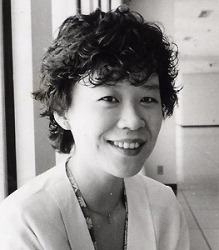 W
WSaeko Himuro was a Japanese novelist, essayist, and playwright born in Iwamizawa, Hokkaidō Prefecture, Japan. During the 1980s and 1990s, she was one of the most popular authors released under Shueisha's Cobalt Bunko imprint. She is best known outside Japan for I Can Hear the Sea, later a Studio Ghibli movie. The cause of her death was determined as lung cancer.
 W
WTaiko Hirabayashi was the pen-name of a Japanese author. Her real name was Hirabayashi Tai.
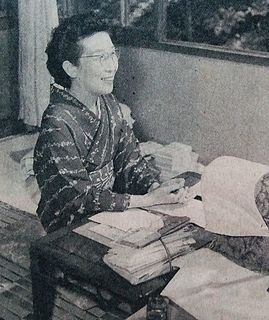 W
WTatsuko Hoshino was a Japanese haiku poet active in Shōwa period Japan.
 W
WMichiko Inukai was a Japanese Roman Catholic author and philanthropist. She was the founder of the Michiko Inukai Foundation, which provides financial aid for refugees seeking education.
 W
WAyako Ishigaki was an Issei journalist, activist, and feminist, who was among the first Japanese American women to publish a memoir in English.
 W
WMomoko Ishii was a distinguished Japanese author and translator of children's books. She was the first member of the Japanese Art Academy from the field of children's literature.
 W
WKunie Iwahashi was a Japanese novelist. She was considered "the female Shintaro Ishihara".
 W
WMichiko Kanba was a Japanese communist, University of Tokyo undergraduate, and a Zengakuren activist. She died in clashes between demonstrators and police at the South Gate of the National Diet Building in central Tokyo at the climax of the 1960 Anpo Protests against the US-Japan Security Treaty. She is buried in Tama Cemetery in Tokyo.
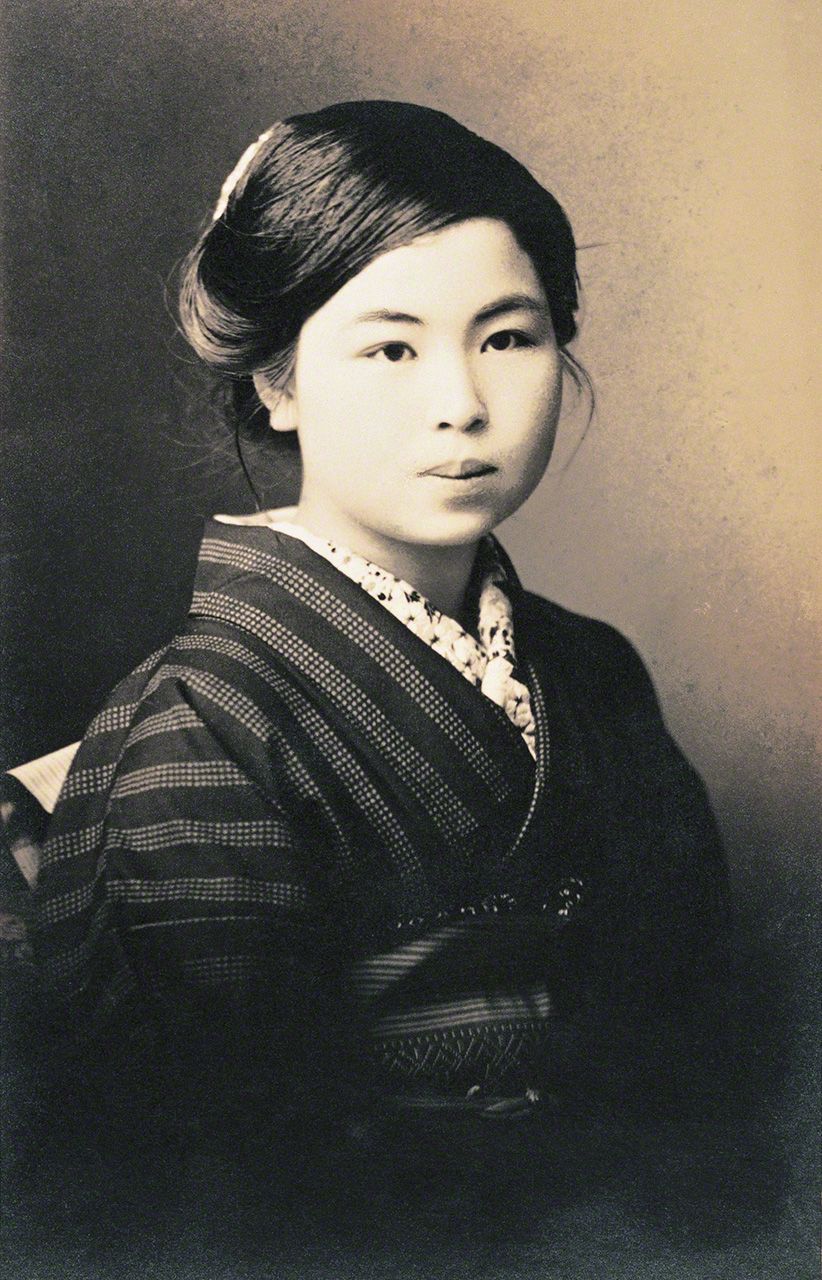 W
WMisuzu Kaneko was a Japanese poet, known for her poetry for children. She was born Teru Kaneko in the fishing village of Senzaki, now part of Nagato, Yamaguchi prefecture. Motifs of fishing and the sea often make appearances in her poems. Celebrated during her lifetime, her works fell into obscurity after her death, until being rediscovered in the 1980s. Since then, she has been regarded as one of Japan's most beloved children's poets.
 W
WKikuko Kawakami was a Japanese writer active during the Shōwa period of Japan. Her maiden name was Shinoda Kikuko.
 W
WYao Kitabatake was a poet and children's literature writer in Shōwa period Japan.
 W
WAya Kitō was a Japanese diarist. She wrote about her personal experiences living with spinocerebellar ataxia which was later published in the book 1 Litre no Namida.
 W
WAya Kōda was a Japanese essayist and novelist. She was the second daughter of Meiji period novelist Kōda Rohan. Her daughter Tama Aoki and granddaughter Nao Aoki are also writers.
 W
WKōno Taeko is one of the most important Japanese writers of the second half of the twentieth century, someone whose influence on contemporary Japanese writers is acknowledged to be immeasurable. Kōno is one of a generation of remarkable women writers who made an appearance in Japan in the 1960s and 1970s and who include Kurahashi Yumiko, Mori Mari, Setouchi Harumi, and Takahashi Takako. She also established a reputation for herself as an acerbic essayist, a playwright and a literary critic. By the end of her life she was a leading presence in Japan's literary establishment, one of the first women writers to serve on the Akutagawa Literary Prize committee. Oe Kenzaburo, Japan's Nobel Laureate, described her as the most "lucidly intelligent" woman writers writing in Japan, and the US critic and academic Masao Miyoshi identified her as among the most "critically alert and historically intelligent." US critic and academic Davinder Bhowmik assesses her as “…one of the truly original voices of the twentieth century, beyond questions of gender or even nationality.” A writer who deals with some quite dark themes, Kōno is known to readers in English through the collection of short stories Toddler-Hunting and Other Stories, which draws together her best writing from the 1960s.
 W
WFumiyo Kōno , commonly romanized Fumiyo Kouno, is a Japanese manga artist from Nishi-ku, Hiroshima, known for her 2004 manga Town of Evening Calm, Country of Cherry Blossoms & her 2007 manga In This Corner of the World which got an anime film adaptation in 2016 by MAPPA.
 W
WTakeko Kujō was a humanitarian and founder of the Buddhist Women's Association in order to promote the status and solidarity of Buddhist women in Japan, and later overseas.
 W
WSadako Kurihara was a Japanese poet who lived in Hiroshima and survived the atomic bombing during World War II. She is best known for her poem Umashimenkana.
 W
WAkimoto Matsuyo was one of Japan's leading playwrights of post war Japan, and most respected as a realist Japanese playwright. She was known for her shingeki plays, but had written some classical puppet bunraku and kabuki dramas, and later became a scriptwriter for both radio and television shows. Along with Akimoto's childhood, World War II played a significant role in her career. As a realist playwright, she used her work to make political statements in order to warn the greater Japanese community that the government was trying to continue their pre-war imperial system which was fulfilled with capitalism, militarism, and patriarchy.
 W
WHiroko Minagawa is a Korean-born Japanese writer of mystery, fantasy, horror and historical fiction.
 W
WMiyamoto Yuriko was a Japanese novelist, short-story writer, social activist, and literary critic active during the Taishō and early Shōwa periods of Japan. She is best known for her autobiographical fiction and involvement in proletarian and women's liberation movements.
 W
WJunko Mizuno is a Japanese manga artist. Her drawing style is often termed as Gothic kawaii or kawaii noir style.
 W
WAyame Mizushima was a Japanese novelist and screenwriter, commonly referred to as the first woman to have received on screen credit in Japan.
 W
WChie Nakane was a Japanese anthropologist and Professor Emerita of Social Anthropology at the University of Tokyo.
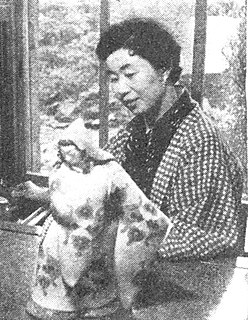 W
WTsuneko Nakazato was the pen-name of a novelist in Shōwa period Japan. Her real name was Nakazato Tsune.
 W
WYaeko Nogami was the pen-name of a novelist of the Shōwa period Japan. Her maiden name was Kotegawa Yae.
 W
WKanoko Okamoto was the pen-name of a Japanese author, tanka poet, and Buddhist scholar active during the Taishō and early Shōwa periods of Japan.
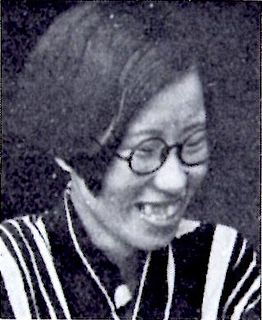 W
WSagawa Chika was a Japanese avant-garde poet.
 W
WMegumu Sagisawa was the pen name of Japanese novelist and writer Megumi Matsuo (松尾めぐみ). Her works of fiction have been described as focusing on topics such as complex interpersonal relationships and the anxieties of the youth.
 W
WJakucho Setouchi , formerly Harumi Setouchi , was a Japanese Buddhist nun, writer, and activist. Setouchi wrote a best-selling translation of The Tale of Genji and over 400 fictional biographical and historical novels. In 1997, she was honored as a Person of Cultural Merit, and in 2006, she was awarded the Order of Culture of Japan.
 W
WMitsuko Shiga was the pen-name of Mitsu Ōta, a Japanese tanka poet active in Taishō and Shōwa periods Japan.
 W
WShinoe Shōda was a Japanese poet and author known for her atomic bomb literature.
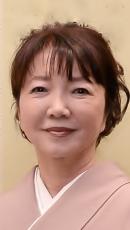 W
WNobuko Takagi is the professional name of Nobuko Tsuruta , a Japanese author. She has won the Akutagawa Prize and the Tanizaki Prize, she has been named a Person of Cultural Merit, and her work has been adapted for film.
 W
WChishō Takaoka was a geisha in Shinbashi who became a Buddhist nun later in life. Her stage name was Chiyoha (千代葉) or Teruha (照葉), while her real name was Tatsuko Takaoka (高岡たつ子). She became famous for her radiant beauty, and for chopping off one of her fingers for her lover. She was a popular model featured in postcards, and was known internationally as the "Nine-Fingered Geisha". She also inspired Jakucho Setouchi's novel, Jotoku.
 W
WHariprobha Takeda (1890-1972) also known as Hariprobha Basu Mallik was a Bengali woman who married a Japanese national. She lived in Japan and wrote a notable autobiography which was turned into a movie in Bangladesh.
 W
WToshiko Tamura was the pen-name of an early modern feminist novelist in Shōwa period Japan. Her birth name was Toshi Satō .
 W
WYōko Tawada is a Japanese writer currently living in Berlin, Germany. She writes in both Japanese and German. Tawada has won numerous literary awards, including the Akutagawa Prize, the Tanizaki Prize, the Noma Literary Prize, the Izumi Kyōka Prize for Literature, the Gunzo Prize for New Writers, the Goethe Medal, the Kleist Prize, and a National Book Award.
 W
WSakae Tsuboi was a Japanese novelist and poet.
 W
WToshiko Ueda was a Japanese manga artist who helped shape the face of modern shojo manga. She wrote under three pen names: 上田としこ for manga, 上田とし子 when writing for newspapers, and later 上田トシコ, all three of which are read as Toshiko Ueda in English.
 W
WChiyo Uno was a female Japanese author who wrote several notable works and was a known kimono designer. She had a significant influence on Japanese fashion, film and literature. She was born in a section of Iwakuni known as Kawanishi, "west of the river." Following an initial literary success and winning of a short story prize, Uno left her first husband and moved to Tokyo. Like many young Japanese of the 1920s, Uno was fascinated with American and European culture and dress and was one of the first women in Japan to bob her hair like a flapper. Beyond hairstyles, Uno also began to pursue the life of a free-spirited woman. She wanted to be a mo ga, or modern girl, and not confined to just the role of supportive wife and mother. She became part of the Bohemian world of Tokyo, having liaisons with other writers, poets and painters.
 W
WMika Yamamoto was an award-winning Japanese video and photojournalist for the news agency Japan Press. Yamamoto was killed on 20 August 2012 while covering the ongoing Syrian Civil War in Aleppo, Syria. She was the first Japanese and fourth foreign journalist killed in the Syrian Civil War that began in March 2011. She was also the fifteenth journalist killed in Syria in 2012. Yamamoto was a recipient of the Vaughn-Uyeda Memorial Prize of the Japanese Newspaper Publishers and Editors Association for her reporting of international affairs in 2004.
 W
WTomoe Yamashiro was a Japanese novelist, and activist. She worked in the Asahi Glass Company. In April 1937, she married Yoshimune Yamashiro, a political activist who was arrested in the mass roundup of socialists and communists on April 16, 1929. In May 1940, Tomoe was arrested for allegedly aiding in the revival of the Communist party along with Yoshimune. They were both thrown in prison. Her husband died in prison in early 1945. After leaving prison following the end of World War II, she became active in agrarianism, and the anti-nuclear movement, and began writing about her experiences.
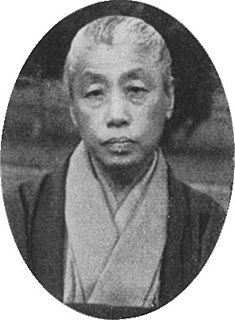 W
WTetsu Yasui was a Japanese educator and writer. She was the first dean of Tokyo Woman's Christian University and its second president.
 W
WYosano Akiko was the pen-name of a Japanese author, poet, pioneering feminist, pacifist, and social reformer, active in the late Meiji period as well as the Taishō and early Shōwa periods of Japan. Her name at birth was Shō Hō . She is one of the most noted, and most controversial, post-classical woman poets of Japan.
 W
WNobuko Yoshiya was a Japanese novelist active in Taishō and Shōwa period Japan. She was one of modern Japan's most commercially successful and prolific writers, specializing in serialized romance novels and adolescent girls' fiction, as well as a pioneer in Japanese lesbian literature, including the Class S genre. Several of her stories have been made into films.
 W
WYuasa Yoshiko was a Russian language scholar and translator of Russian literature in Shōwa period Japan.
 W
WShigeko Yuki was a Japanese writer.